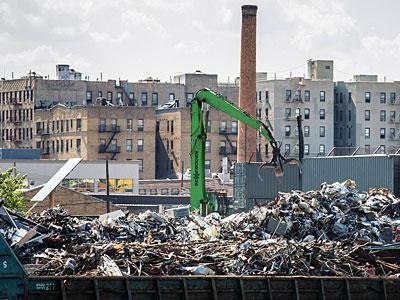Caring for all New Yorkers

Patient advocacy is what defines NYSNA. That was a resounding message of our 2015 Convention. That advocacy starts at the bedside and extends to our communities, and beyond, where we assess and address social and economic conditions — root causes of much of the illness we treat.
In the next year we will sharpen our focus on promoting healthcare equity throughout the state, invoking our own unity, working with coalitions and demanding decent living conditions and access to quality care for all New Yorkers.
Here are some recently-released facts to consider: The New York City Department of Health in October released updated data on community health profiles for Kings County (Brooklyn), and will release updates on each of New York City’s 59 communities over the coming weeks. For the first time, the profiles track environmental and social measures such as housing quality, incarceration rates, air pollution, and food access and their impact on life expectancy and quality of life and paint a detailed picture of neighborhood health.
Disparities are stark

South Bronx, NY
This data, combined with the latest from New York State’s Prevention Agenda and The Commonwealth Fund, show the persistence and, in some cases, growth of disparities in healthcare and outcomes between rich and poor in New York State.
Life expectancy in the Brownsville section of Brooklyn is 11 years less than it is in Manhattan’s Financial District, and Brownsville infants are four-times as likely to die as infants than those in Brooklyn’s Park Slope. Maternal mortality rates in Essex, Lewis and Schuyler Counties are five-times greater than in other areas of the state. Franklin County has the state’s highest average annual diabetes death rate while Hamilton County has the lowest. New York City has a higher percentage of obese children and adolescents than any other area of the state. New Yorkers living in the Mid-Hudson or North Country are less likely to have a regular healthcare provider than those living in the Finger Lakes and Capital Region.
Insurance gaps
Even those with insurance are at risk. Although New York does a good job of insuring children, the same is not true for adults. Lack of insurance, coverage gaps for certain services, high deductibles and/or other out-of-pocket costs are growing, and they are leading people to hold back on getting the healthcare they need. Fifteen percent of New Yorkers went without needed care in the past year because of costs. Only 44 percent of adults age 50 and above received recommended preventive care, such as colon cancer screening, mammograms, pap smears and flu shots at appropriate ages.
Working with others
NYSNA is working with housing advocates, service sector wage activists, environmental groups, public health experts in and out of government, other unions and local and state politicians to improve living conditions and help New Yorkers — all New Yorkers — have healthier lives.
Universal, quality care
Our union is striving to make quality care the norm in every single facility. The Safe Staffing for Quality Care Act is essential to evening out the extremes in hospital-based care and ensuring that every New Yorker gets the nursing care they deserve, regardless of their zip code. Statewide nurse-to-patient ratios would serve to provide a uniform high quality standard of care and work to eliminate variance among communities in staffing-dependent outcome indicators such as readmissions.
In addition, NY Health, a single-payer health system for all New Yorkers, would level the playing field between the insurance haves and have nots and erase the gaps in care and outcomes that result from differences in insurance coverage and out-of-pocket costs. Single payer is a system that makes patient need the priority.
We have extended our job of caring for all New Yorkers beyond the bedside. No one is more motivated and in motion than NYSNA nurses.